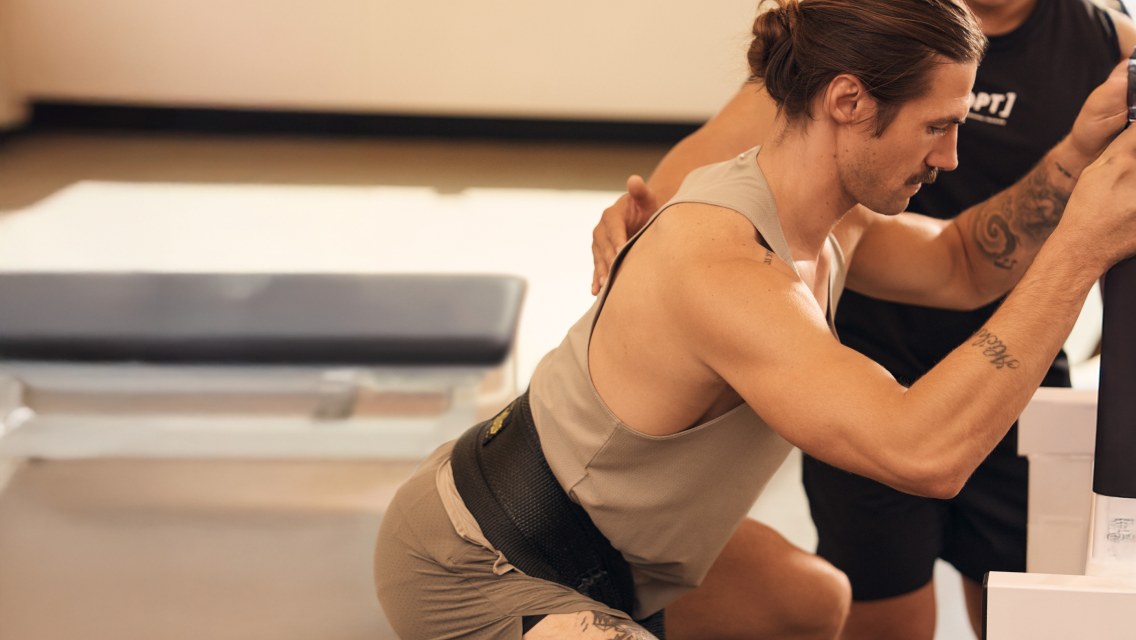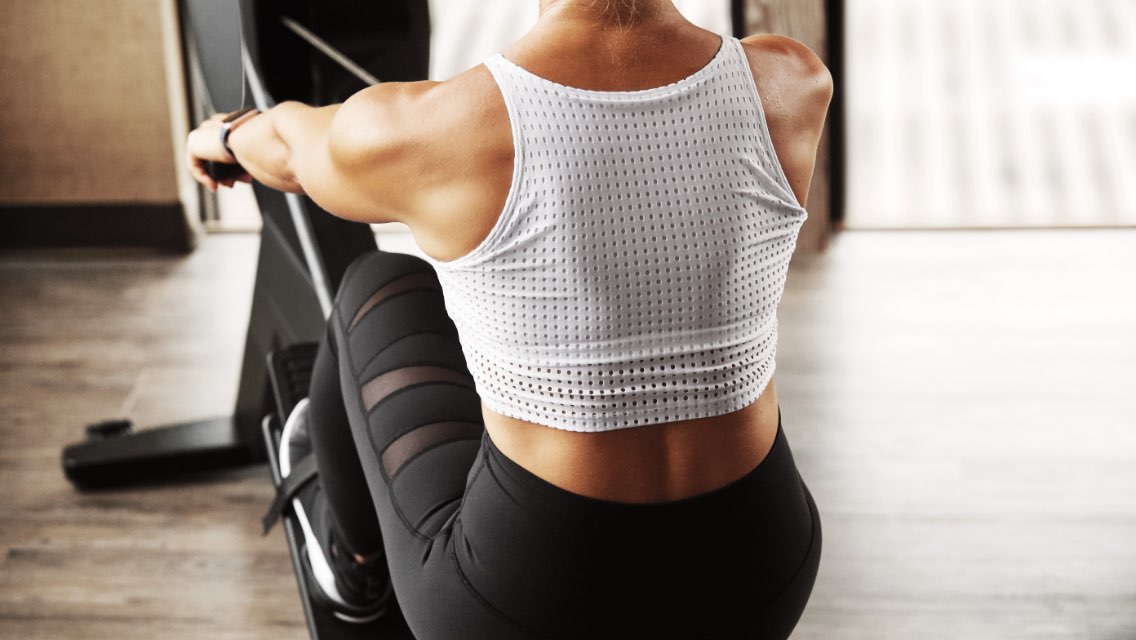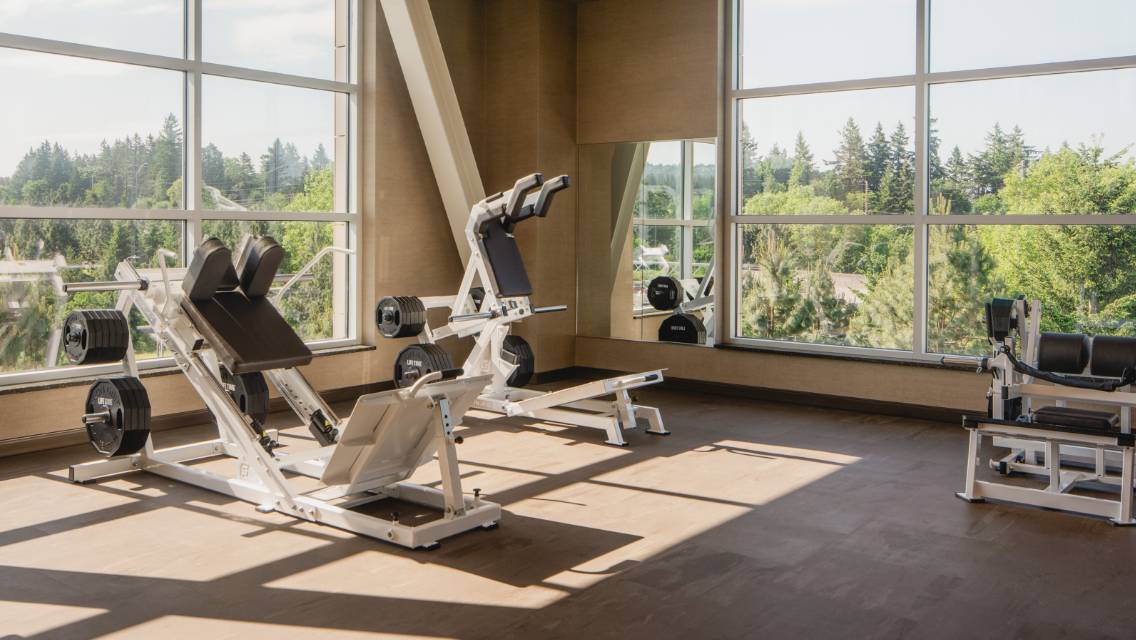Walk into any fitness facility and you’re likely to spot a few machines that look a little odd. With pulleys, levers, cables, and more, they can leave even seasoned exercisers scratching their heads: How do you use this? What muscle groups does it target? How do I pick a weight or adjust the settings? What should my form look like?
It would be easy to turn away and stick with machines in your comfort zone. However, fitness experts tout the benefits of including variety in your routine and not shying away from learning how to use equipment that could help you target a muscle more effectively or break through fitness plateaus.
“One of the benefits of your Life Time membership is having access to a huge variety of equipment, which ensures that you can find a machine that best fits your body and style of training at any given time,” says Master Trainer Danny King, director of performance and recovery at Life Time. “There isn’t a machine on our workout floor that wasn’t intentionally chosen because of its ability to impact someone’s fitness — and even though not every machine is for everybody, if you never approach new ones, then you’ll never know what gains they could offer you.”
To help members feel more comfortable exploring these options, King chose three machines that target different major muscle groups and can fit seamlessly into almost any strength-training routine. Together, they’re a great starting point for adding variety and balance to your workouts.
“Another advantage of being a Life Time member is there are always Dynamic Personal Trainers around the workout floor who can show you how to use any machine,” he notes. “If there’s a machine you’re unsure about that’s not one of these three, all you have to do is ask one of them.”
1. Assisted Pull-Up Machine
“This machine targets the major muscles in your back, including your lats, rhomboids, and traps, as well as your biceps, abs, and obliques,” says King. “Changing your grip, like using a wide grip or an underhand grip, can help you target different muscle fibers more directly.
“Pull-ups are among the best exercises for the upper body’s ‘pulling’ muscles, and very few people can get close to an unassisted pull-up,” he continues. “Starting with this counter-balance machine — which allows you to only lift a certain amount of your body weight with each set — can help you build strength and allow you to decrease the amount of assistance over time.”
- Adjust the load on the machine by placing the pin at your desired weight. The assisted pull-up machine is unique in that the more load you add, the easier your pull-up will be (as it offsets your bodyweight). If you’re newer to the exercise, start with more assistance (more loaded weight) until you’re comfortable with the movement.
- Start in a standing position on the machine’s platform. Hold the pull-up handles with a neutral grip, your palms facing each other.
- Engage your core and press down on the platform with your feet to offset your bodyweight.
- Start with your arms fully extended, then pull yourself upward until your chin clears the bar. Instead of just pulling with your arms, think about driving down with your elbows.
- Slowly lower yourself with control to the starting position. Avoid swinging or letting the platform push you up too quickly — prioritize control in both directions.
- Repeat for three sets of 8 to 12 reps. When finished, step back onto the platform on either side with one leg at a time.
2. Belt Squat Machine
“This machine primarily targets the major muscles in your legs, like the quads and glutes,” says King. “It also hits the hamstrings, abductors, calves, and your abs and lower back. The machine might look intimidating, but it can actually be a great beginner-friendly squat option when compared to barbell squats, as it reduces the load on your back and shoulders.”
- Stand on the platform and secure the belt snugly around your hips. Stand tall with your feet about shoulder width apart.
- Adjust the carabiner and chain so you’re able to squat with a full range of motion.
- Hook the chain onto the lever arm on the belt squat. Most people will use one of the middle settings. The closer you hook the chain to the weight, the heavier it will feel.
- Lower into a squat by pushing your hips back and bending your knees, keeping your chest tall.
- Push through your heels to return to standing. Throughout the movement, maintain steady breathing and tension and keep your chest lifted and core engaged. Avoid letting your knees cave inward or bounce at the bottom of the movement.
- Repeat for three sets of 8 to 12 reps. When finished, pull the handle to re-engage the hook that holds the weight.
3. Dual Adjustable Pulley (DAP) Chest Press
“This machine has two independent adjustable cables, and you can use one or both cables for an exercise, making it highly versatile,” says King. “You can adjust the angle of the cables to target different areas in your chest, and once you’re comfortable with the machine, you can use it to perform several other exercises with different attachments.
“This chest-press move mainly targets the chest while also working the secondary muscles in the front of your shoulders, triceps, core, and obliques,” he adds.
- Stand in the middle of the cable station and adjust each side of the cable to be positioned just below shoulder height.
- Facing outward, take one handle in each hand, with your elbows bent at 90 degrees and your hands stationed just outside your chest. Stagger your stance for balance.
- Press both handles forward until your arms are extended, keeping a slight bend in your elbows. Think “squeeze the chest” as you press the cables forward.
- Slowly bring the handles back to the starting position with control. Throughout the movement, maintain steady tension on either side of the cables and avoid overextending your back or letting the weights snap your arms backward.
- Repeat for three sets of 8 to 12 reps.





